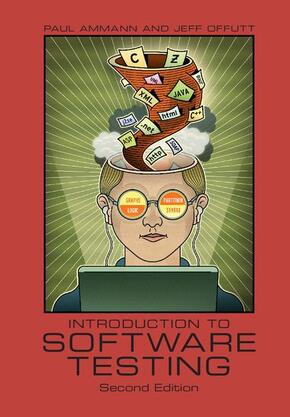Introduction to Software Testing
| Verlag | Cambridge University Press |
| Auflage | 2016 |
| Seiten | 364 |
| Format | 17,6 x 26,1 x 2,0 cm |
| Gewicht | 899 g |
| Artikeltyp | Englisches Buch |
| ISBN-10 | 1107172012 |
| EAN | 9781107172012 |
| Bestell-Nr | 10717201UA |
This classroom-tested new edition features expanded coverage of the basics and test automation frameworks, with new exercises and examples.
This extensively classroom-tested text takes an innovative approach to explaining software testing that defines it as the process of applying a few precise, general-purpose criteria to a structure or model of the software. The book incorporates cutting-edge developments, including techniques to test modern types of software such as OO, web applications, and embedded software. This revised second edition significantly expands coverage of the basics, thoroughly discussing test automaton frameworks, and it adds new, improved examples and numerous exercises. The theory of coverage criteria is carefully and cleanly explained to help students understand concepts before delving into practical applications, while extensive use of the JUnit test framework gives students practical experience in a test framework popular in the industry. Exercises, meanwhile, feature specifically tailored tools that allow students to check their own work. The book's website also offers an instructor's manual, PowerPoint slides, testing tools for students, and example software programs in Java.
Inhaltsverzeichnis:
Preface; Part I. Foundations: 1. Why do we test software?; 2. Model-driven test design; 3. Test automation; 4. Putting testing first; 5. Criteria-based test design; Part II. Coverage Criteria: 6. Input space partitioning; 7. Graph coverage; 8. Logic coverage; 9. Syntax-based testing; Part III. Testing in Practice: 10. Managing the test process; 11. Writing test plans; 12. Test implementation; 13. Regression testing for evolving software; 14. Writing effective test oracles; List of criteria.
Rezension:
Review of the first edition: 'I think this is a great testing book, both from academic and industrial perspectives. I believe Ammann and Offutt's book will become the testing textbook of choice. There are a lot of testing books out there, some better than others. Most are narrow in the topics they cover and the level of detail they present. In stark contrast, Ammann and Offutt's book has the advantage of presenting concepts and techniques that cover the broad range of languages and platforms used in practice by industry and academia. Theirs is one of the most thorough and practical testing books ever published.' Roger Alexander, Washington State University




